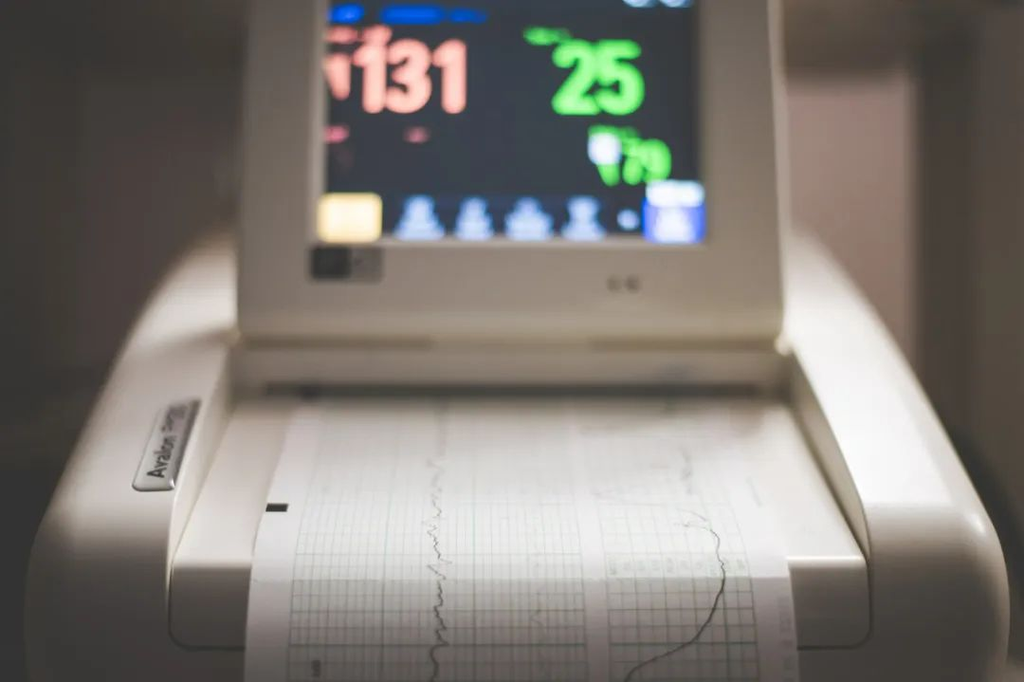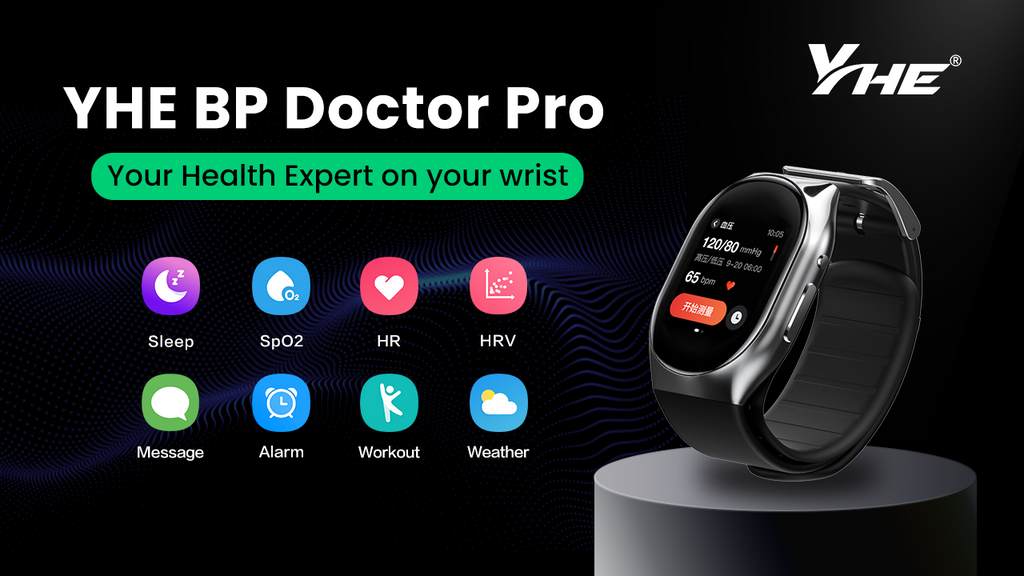Heart rate variability (HRV) seems to have become a widely discussed topic in recent years, especially for those who are concerned about their own health and want to better understand their health. On the other hand, the HRV monitoring function is widely used in various health-related procedures or devices, and has become one of the indispensable and important indicators for monitoring the overall health status.
In this article, we will dive into heart rate variability (HRV).
What is Heart Rate Variability (HRV)?
Heart rate variability (HRV) is a physiological measure of the change in variability between successive heartbeats and reflects ANS (the autonomic nervous system). HRV is measured in milliseconds (ms) during the R-R interval, sometimes referred to as the inter-beat interval (IBI). It works behind the scenes, automatically regulating our heart rate, blood pressure, breathing, and digestion among other key tasks. HRV is optimal when associated with self-regulation, adaptability and resilience.

In other words, a healthy heart is considered to has healthy "irregularities". The interval between two consecutive heartbeats is irregular. HRV measures precisely this irregularity of the heartbeat: when the heartbeat is very regular, the HRV level is low; if the heartbeat interval varies greatly, it means the HRV level is high. In general, we would want the HRV to be as high as possible.
Why does HRV matter?
Monitoring HRV can provide a lot of information about an individual’s physical and mental health, because it demonstrates the body’s ability to respond to stress and change. Higher HRV generally means the body is better prepared and resilient when faced with adversities.

Previous studies have shown a strong clinical relation between HRV and the control mechanism of the autonomic nervous system (ANS) 【1】, where HRV provides a non-invasive method of analyzing the ANS. For example, a reduced variability in the R-R distances suggests ANS dysfunction. The nervous system, cardiovascular system and respiratory systems are all linked via ANS. Because of the role that HRV plays in evaluating the ANS, with HRV data, an individual’s psychological health, physical health, and environmental condition can be monitored.
HRV and hypertension
Studies have reported decreased HRV among hypertensives and the relation between blood pressure and HRV is present across a wide range of blood pressures. The Atherosclerosis Risk in Communities study has reported that HRV is significantly lower in hypertensive participants, with participants in the lowest HRV quartile having a 2.44 times greater risk of hypertension than those in the highest quartile during the 3-year follow-up period 【2】. Another study conducted in 2020 also found that a low value for a particular linear index of HRV of HRV (SDNN, RMSSD, VLF, LF, or HF) may characterize from 37 to 80% higher risk for hypertension development in comparison to a healthier cardio autonomic profile【3】.

Thus, there was an assumption that impaired autonomic nervous function and decreased HRV may be underlying causes of hypertension, and estimation of HRV may improve hypertension risk prediction【4】. Higher HRV tends to display better cardiovascular function and stress tolerance than lower HRV level.
How to measure your HRV?
In a common way, current HRV tracking devices determined HRV using a electrocardiogram (ECG) device. ECG technology is regarded as the gold standard when it comes to measuring heart rate, uses an electrical voltage signal produced by heart activity to measure HRV.
In contrast, there is now a new way to measure our HRV, which is called Photoplethysmography (PPG). PPG technology uses light and sensors to measure blood volume changes in our cardiovascular system, especially the veins and capillaries under our skin. PPG technology doesn’t require electrodes or heart rate straps and it’s not invasive. Though there are also minor drawbacks about this technology, such as the activity caused inaccuracies in HRV recordings, it is still a good method that allows users to get extremely accurate HRV data over an extended period of time.
A perfect way to measure your HRV
YHE BP Doctor Pro provides you with a perfect way to track your HRV with its PPG technology. You’re able to get your HRV measured at night, which is an ideal time to monitor your HRV. Your body was at rest and there was little movement. No need to go to the doctor’s anymore. Rather, it measures your HRV automatically. You could just turn on “HRV Monitoring” function on your BP Doctor Pro and it would start measuring your HRV automatically during your sleep.

Since it adopts PPG technology for HRV tracking, the accuracy will definitely satisfy your need and expectation. What’s more, the best thing is that all these data can be recorded. You will be easy to track your HRV and its trend, in order to better capture your overall health condition.
How to increase HRV level?
Here are some ways to effectively help improve our HRV levels.
- Proper exercise and training
Regular exercise is one of the most effective ways to improve HRV. Athletes should avoid excessive exercise, because vigorous exercise reduces HRV in the short term. Be careful not to put too much stress on your body or you won't have enough time to recover.
- Eat healthy food at the right time
While a healthy and nutritious diet is good for HRV, regular eating patterns contribute to circadian rhythms. Stop eating 3-4 hours before bed can improve sleep quality by allowing the body to focus on its own recovery rather than digesting food.
- Stay hydrated
The amount of blood in the body is determined by your level of hydration. The more fluid there is in the system, the easier it is for the blood to circulate oxygen and nutrients throughout the body.
- Avoid alcohol
Studies have shown that drinking alcohol can reduce HRV by an average of 22 milliseconds on the second day, while the effects of alcohol on the body system may reduce HRV levels for up to 4-5 days.
- Get good, consistent sleep
In addition to getting enough quality sleep, a regular sleep schedule is also important. Continued sleep helps to get more REM sleep and deep sleep, which improves circadian rhythm and increases HRV.
- Be exposed to natural light
Outdoor exposure to natural sunlight, especially in the morning, triggers biological processes that regulate sleep-wake times, energy levels, and hormone synthesis.

- Take a cold shower
The vagus nerve can activate the parasympathetic branch of the ANS and control HRV. By exposing the body to low temperatures for a short period of time, such as a cold shower, the vagus nerve can be stimulated and HRV can be increased.
- Practice intentional breathing
Slow, controlled breathing has been shown to boost HRV and help fight anxiety and stress.
- Practice mindfulness
For some people, practicing meditation and other mindfulness techniques can have a positive impact on HRV, as well as help with relaxation and stress reduction.
References:
【1】 Z. Binici, M. R. Mouridsen, L. Køber, and A. Sajadieh, “Decreased nighttime heart rate variability is associated with increased stroke risk,” Stroke, vol. 42, no. 11, pp. 3196–3201, Nov. 2011.
【2】 Liao D, Cai J, Barnes RW, Tyroler HA, Rautaharju P, Holme I, Heiss G. Association of cardiac autonomic function and the development of hypertension: the ARIC study. Am J Hypertens 1996; 9 (12 Pt 1), 1147–1156.
【3】 Hoshi, R.A., Santos, I.S., Dantas, E.M. et al. Reduced heart-rate variability and increased risk of hypertension—a prospective study of the ELSA-Brasil. Journal of Human Hypertension 35, 1088–1097 (2021). https://doi.org/10.1038/s41371-020-00460-w
【4】 Mori H , Saito I , Eguchi E , et al. Heart rate variability and blood pressure among Japanese men and women: a community-based cross-sectional study.[J]. Hypertension Research Official Journal of the Japanese Society of Hypertension, 2014, 37(8):779-84.
